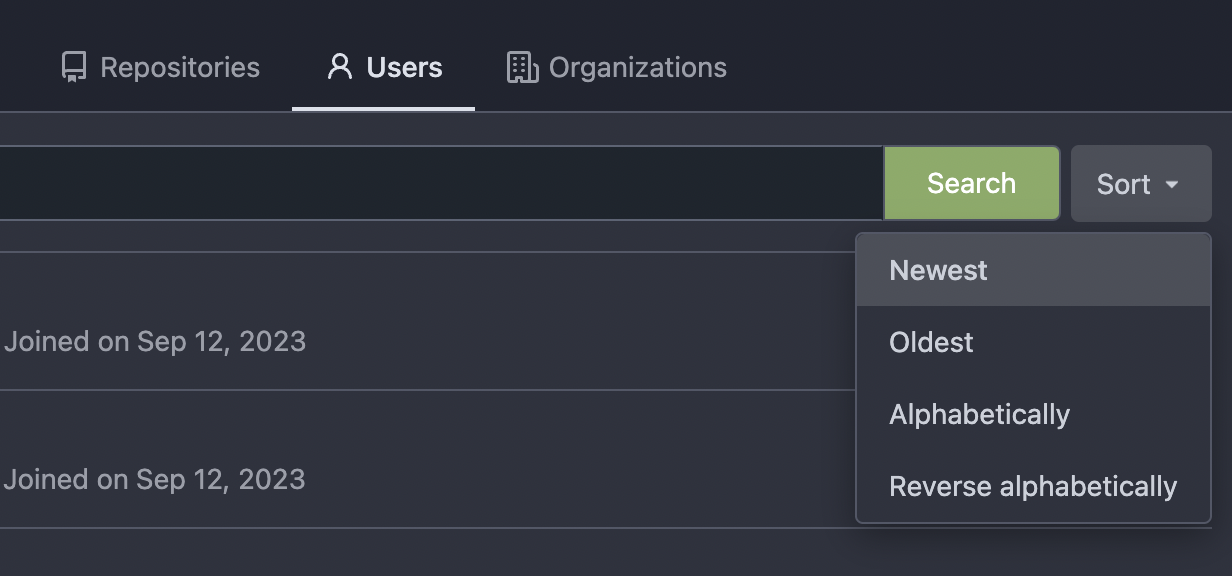A remote user (UserTypeRemoteUser) is a placeholder that can be
promoted to a regular user (UserTypeIndividual). It represents users
that exist somewhere else. Although the UserTypeRemoteUser already
exists in Forgejo, it is neither used or documented.
A new login type / source (Remote) is introduced and set to be the login type
of remote users.
Type UserTypeRemoteUser
LogingType Remote
The association between a remote user and its counterpart in another
environment (for instance another forge) is via the OAuth2 login
source:
LoginName set to the unique identifier relative to the login source
LoginSource set to the identifier of the remote source
For instance when migrating from GitLab.com, a user can be created as
if it was authenticated using GitLab.com as an OAuth2 authentication
source.
When a user authenticates to Forejo from the same authentication
source and the identifier match, the remote user is promoted to a
regular user. For instance if 43 is the ID of the GitLab.com OAuth2
login source, 88 is the ID of the Remote loging source, and 48323
is the identifier of the foo user:
Type UserTypeRemoteUser
LogingType Remote
LoginName 48323
LoginSource 88
Email (empty)
Name foo
Will be promoted to the following when the user foo authenticates to
the Forgejo instance using GitLab.com as an OAuth2 provider. All users
with a LoginType of Remote and a LoginName of 48323 are examined. If
the LoginSource has a provider name that matches the provider name of
GitLab.com (usually just "gitlab"), it is a match and can be promoted.
The email is obtained via the OAuth2 provider and the user set to:
Type UserTypeIndividual
LogingType OAuth2
LoginName 48323
LoginSource 43
Email foo@example.com
Name foo
Note: the Remote login source is an indirection to the actual login
source, i.e. the provider string my be set to a login source that does
not exist yet.
When searching for users, page the results by default, and respect the
default paging limits.
This makes queries like '/api/v1/users/search?limit=1' actually work.
Signed-off-by: Gergely Nagy <forgejo@gergo.csillger.hu>
just some refactoring bits towards replacing **util.OptionalBool** with
**optional.Option[bool]**
---------
Co-authored-by: KN4CK3R <admin@oldschoolhack.me>
(cherry picked from commit f6656181e4a07d6c415927220efa2077d509f7c6)
Conflicts:
models/repo/repo_list_test.go
trivial shared fixture count conflicts
Thanks to inferenceus : some sort orders on the "explore/users" page
could list users by their lastlogintime/updatetime.
It leaks user's activity unintentionally. This PR makes that page only
use "supported" sort orders.
Removing the "sort orders" could also be a good solution, while IMO at
the moment keeping the "create time" and "name" orders is also fine, in
case some users would like to find a target user in the search result,
the "sort order" might help.

(cherry picked from commit eedb8f41297c343d6073a7bab46e4df6ee297a90)
Part of #27065
This reduces the usage of `db.DefaultContext`. I think I've got enough
files for the first PR. When this is merged, I will continue working on
this.
Considering how many files this PR affect, I hope it won't take to long
to merge, so I don't end up in the merge conflict hell.
---------
Co-authored-by: wxiaoguang <wxiaoguang@gmail.com>
Change all license headers to comply with REUSE specification.
Fix #16132
Co-authored-by: flynnnnnnnnnn <flynnnnnnnnnn@github>
Co-authored-by: John Olheiser <john.olheiser@gmail.com>
Was looking into the visibility checks because I need them for something different and noticed the checks are more complicated than they have to be.
The rule is just: user/org is visible if
- The doer is a member of the org, regardless of the org visibility
- The doer is not restricted and the user/org is public or limited